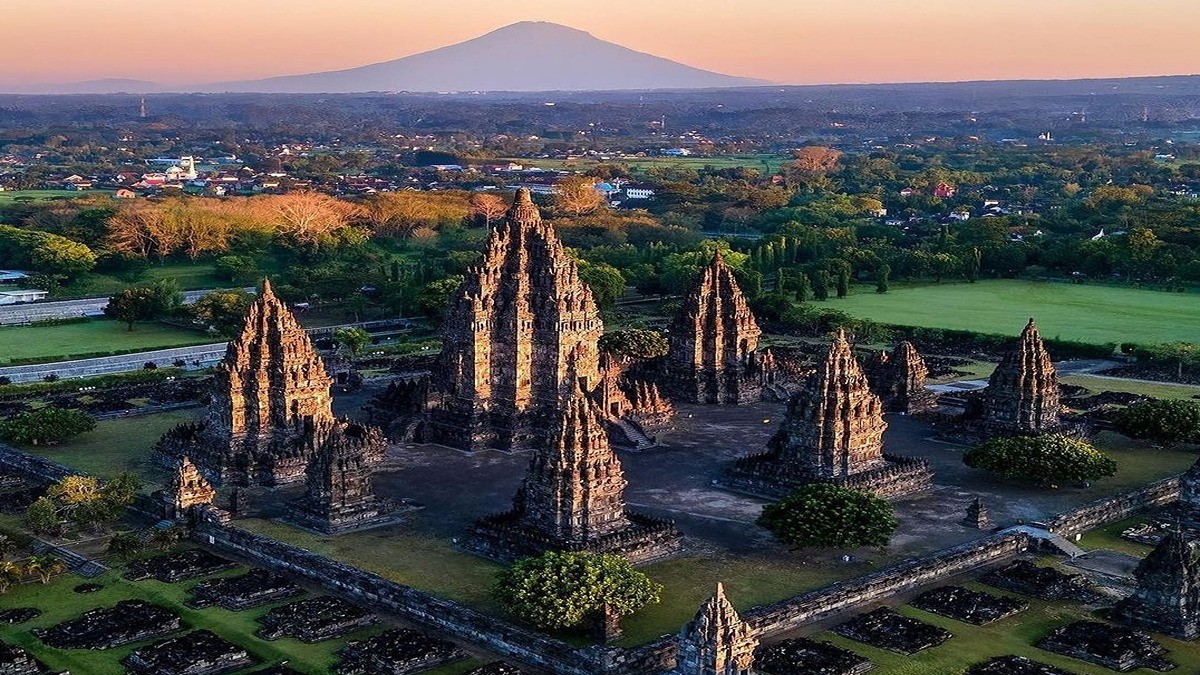
Indonesia is home to a rich tapestry of cultural and historical treasures, with its temples standing as majestic reminders of the nation’s ancient civilizations. Among these, Borobudur is undoubtedly the most renowned, but the archipelago boasts a wealth of other fascinating temple sites that offer a glimpse into the region’s diverse religious and cultural heritage. Here’s a journey through Indonesia’s most significant temples, starting with Borobudur and extending to other notable sacred sites.
1.Borobudur: The Jewel of Java

Overview
Located in Central Java, Borobudur is the world’s largest Buddhist monument and a UNESCO World Heritage Site. This stunning temple complex, built in the 9th century, is an architectural marvel and a pilgrimage site for Buddhists around the world.
Architectural Features
- Stupas and Reliefs: Borobudur features a vast array of intricate reliefs and over 500 statues of Buddha. The temple is structured as a series of concentric squares topped by a central dome, symbolizing the path to enlightenment.
- Mandala Layout: The temple’s design follows a mandala layout, representing the universe. It’s divided into three tiers: the base representing the world of desire, the middle level representing the world of forms, and the upper level representing the world of formlessness.
Visiting Borobudur
- Best Time to Visit: Early morning or late afternoon is ideal to avoid crowds and enjoy the serene atmosphere.
- Practical Tips: Wear comfortable walking shoes, as the temple complex requires a fair amount of walking and climbing. Respect local customs and dress modestly.
2. Prambanan: The Majestic Hindu Temples

Overview
Located near Yogyakarta, Prambanan is the largest Hindu temple complex in Indonesia and a UNESCO World Heritage Site. Built in the 9th century, it is dedicated to the Trimurti, the Hindu trinity of Brahma, Vishnu, and Shiva.
Architectural Features
- Main Temples: The complex consists of three main temples dedicated to Brahma, Vishnu, and Shiva, each adorned with intricate carvings depicting Hindu mythology.
- Candi Rara Jonggrang: The central temple, known as Candi Rara Jonggrang, stands at 47 meters high and is adorned with detailed reliefs illustrating the epic Ramayana.
Visiting Prambanan
- Best Time to Visit: Early morning or late afternoon provides the best light for photography and a cooler experience.
- Practical Tips: Wear appropriate clothing covering shoulders and knees, and carry a hat or sunblock as the area can get quite hot.
3. Candi Sewu: The Forgotten Gem

Overview
Candi Sewu, located near Prambanan, is a lesser-known but equally impressive Buddhist temple complex. Built in the 8th century, it predates Borobudur and features a series of small temples surrounding a central stupa.
Architectural Features
- Design: The complex consists of 249 small temples arranged around a central stupa, with intricate carvings and a layout reflecting Buddhist cosmology.
- Restoration: The temple complex has undergone significant restoration, making it a fascinating site for those interested in early Javanese Buddhist architecture.
Visiting Candi Sewu
- Best Time to Visit: Early morning or late afternoon is ideal for avoiding crowds and enjoying cooler temperatures.
- Practical Tips: Bring comfortable walking shoes and be prepared for some uneven terrain. Respect the historical significance of the site.
4. Goa Gajah: The Elephant Cave Temple

Overview
Goa Gajah, also known as the Elephant Cave Temple, is a Hindu-Buddhist temple located in Ubud, Bali. The site dates back to the 11th century and features a unique cave entrance and a series of ancient relics.
Architectural Features
- Cave Entrance: The entrance to the cave is carved with a menacing face, believed to ward off evil spirits.
- Bathing Pools: The temple features a series of ancient bathing pools, known as “Tirta Empul,” used for purification rituals.
Visiting Goa Gajah
- Best Time to Visit: Early morning is the best time to avoid crowds and experience the temple in a tranquil setting.
- Practical Tips: Dress modestly, covering shoulders and knees. Be respectful of local customs and ceremonies.
5. Tirta Empul: The Holy Spring Temple

Overview
Tirta Empul, located in central Bali, is renowned for its holy spring water, which is believed to have purifying and healing properties. The temple complex is a popular site for traditional Balinese purification rituals.
Architectural Features
- Holy Springs: The temple’s main feature is the holy spring, where visitors can participate in purification rituals under the flowing waters.
- Balinese Architecture: The temple showcases traditional Balinese architecture with intricately carved stone structures and traditional pavilions.
Visiting Tirta Empul
- Best Time to Visit: Morning or early afternoon is ideal to witness the purification rituals and avoid large crowds.
- Practical Tips: Wear appropriate clothing for temple visits and consider participating in a traditional purification ritual if offered.
6. Pura Ulun Danu Bratan: The Temple on the Lake

Overview
Pura Ulun Danu Bratan is a stunning water temple located on the shores of Lake Bratan in Bali. This temple is dedicated to Dewi Danu, the goddess of water, and is a picturesque example of Balinese temple architecture.
Architectural Features
- Lake Setting: The temple is situated on an island in Lake Bratan, with its pagoda-like structures reflecting in the calm waters.
- Cultural Significance: The temple plays a crucial role in local irrigation and water management, reflecting its importance to Balinese agriculture and culture.
Visiting Pura Ulun Danu Bratan
- Best Time to Visit: Early morning or late afternoon offers the best light and fewer crowds.
- Practical Tips: Bring warm clothing, as the area can be cooler due to its elevation. Respect local customs and dress appropriately.
Conclusion
Indonesia’s temples offer a rich tapestry of cultural and historical experiences, from the grandeur of Borobudur and Prambanan to the serene beauty of Pura Ulun Danu Bratan. Each site provides a unique window into Indonesia’s diverse religious heritage and architectural marvels. Whether exploring the ancient stone carvings of Java or the sacred waters of Bali, visitors to these temples can gain a deeper understanding of the country’s spiritual and historical legacy.
